Key Takeaways
- Fall cutting management aids in alfalfa persistence.
- Regrowth uses root reserves, does not immediately replenish.
- A final cutting >900 OR <360 GDD Base 41F prior to a killing frost can help preserve root stores
- Use the Alfalfa Cutting Tool to estimate final cutting date based on these guidelines.
Fall cutting management is an important part of managing alfalfa persistence and maintaining productivity through the life of a stand. When we cut alfalfa, it takes energy to push new shoots and regrow. All that energy at first has to come from storage in the crown of the plant. This happens until the new regrowth is about 6-8 inches tall, at which point it can start to replenish those root reserves.
From various research efforts into the physiology of alfalfa winter survival, it appears that many of these root reserve compounds are positively linked to winter survival, so preserving them can aid our alfalfa stand in surviving winter and thriving the following spring. Manipulating the time of fall cutting allows us to control the stores of these compounds to give the best chance at winter survival of our alfalfa stands.
When taking a final fall cut, we either want to leave enough time for regrowth that root reserves can be nearly fully replenished, or we want to leave too little time for regrowth so we don’t draw them down in the first place. Extensive research conducted in Canada found that leaving ~900 growing degree days (GDD) Base 41F between cutting and a killing frost is a good balance for managing these root stores. Alternatively, with fewer than 360 GDD base 41F between fall cutting and a killing frost there won’t be enough time for regrowth to deplete root reserves.
Why 900 and 360 GDD?
Though this information has been shared as a guideline, it has historically been difficult for farmers to use this in their own field location, leading many to fall back on experience or the adage to cut 5-6 weeks before a killing frost. To aid farmers in using these recommendations, we created the Alfalfa Cutting Tool, a map based weather tool which utilizes current and historic weather data to provide a localized application of these guidelines across Wisconsin. This can be used to help aid your fall alfalfa management decision and provide more information when you make risk assessments around fall cutting timing.
Though there are many pieces built into this tool to aid in full season management, most pertinent to fall cutting is the Growth Projection tool. Simply select your location in the state, set a cut date and you will get a localized chart showing how many GDD are predicted to accumulate, along with the chance of a killing frost occurring on or before a given date, allowing you to make a better risk assessment for your fall cutting date.
GDD Accumulated After Sept. 1 (Arlington, WI)
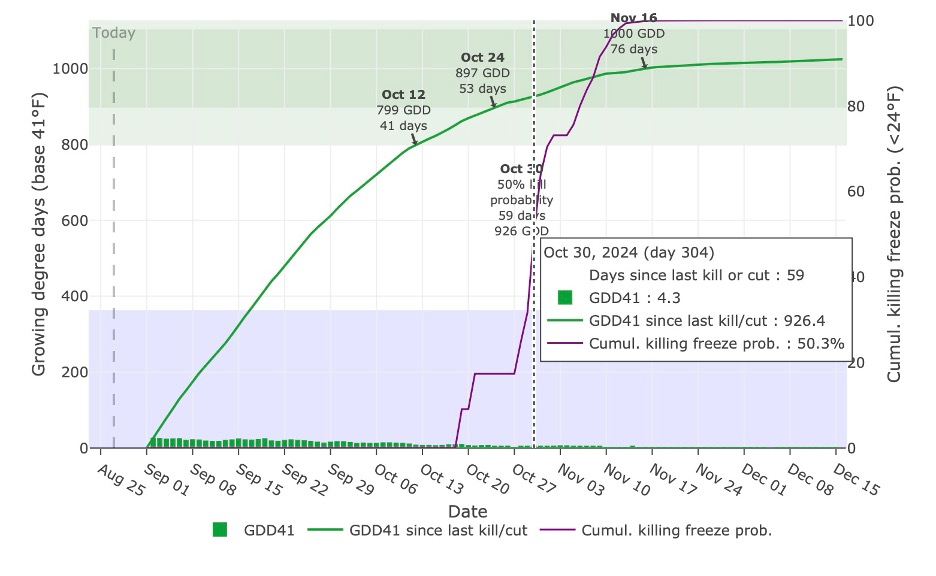
References
Special thanks to Ben Bradford for his expertise and experience in creating the alfalfa cutting tool.

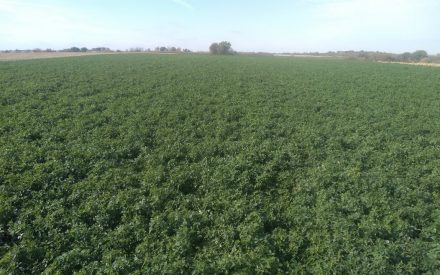 Warm Days Aren’t Always Hay Days
Warm Days Aren’t Always Hay Days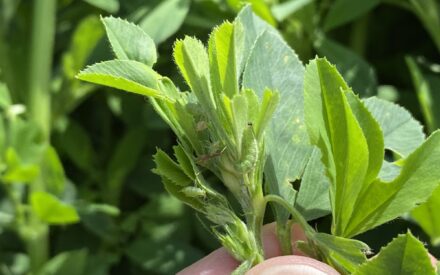 ▶ Forage Insect Pest Update
▶ Forage Insect Pest Update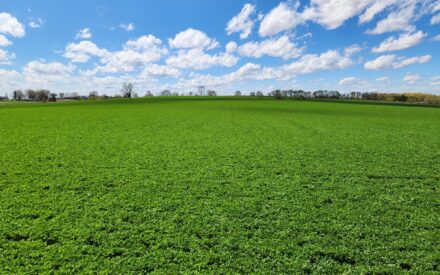 ▶ Determining the Value of Standing Forage
▶ Determining the Value of Standing Forage